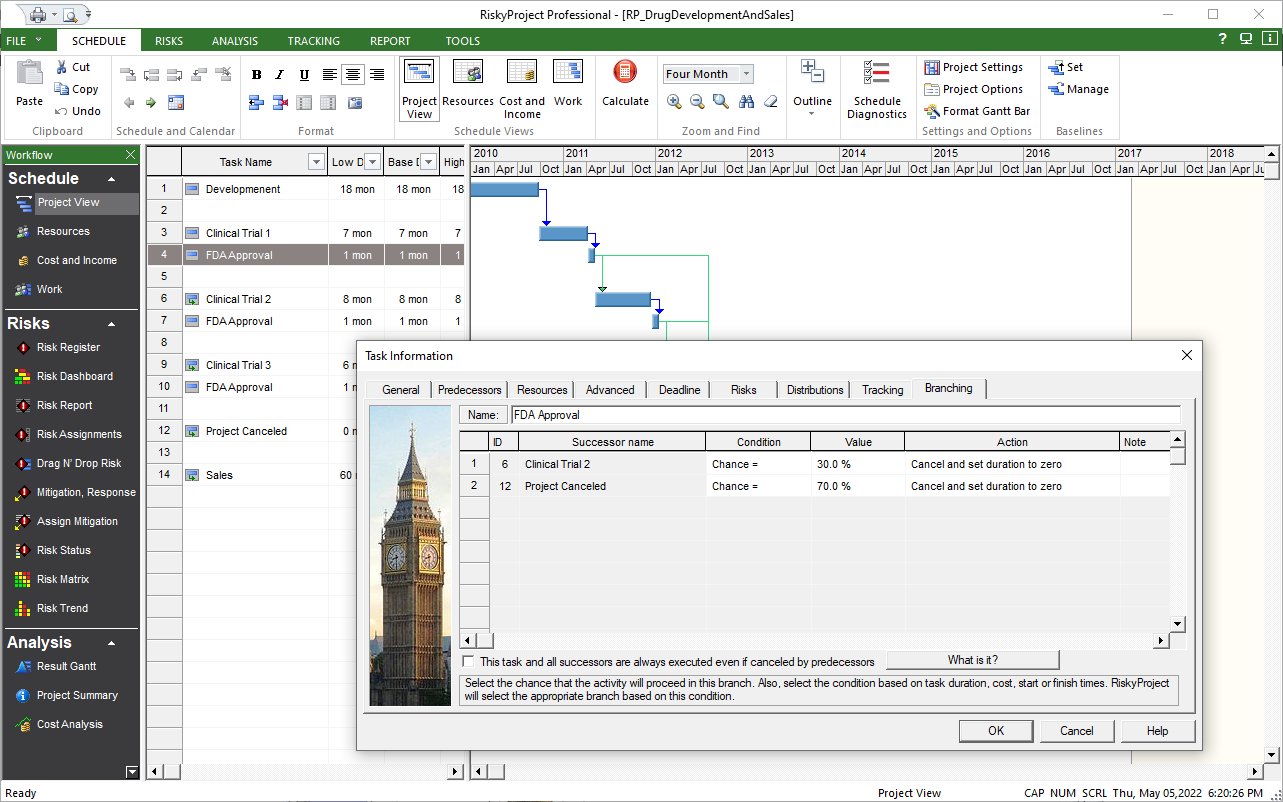What is Probabilistic and Conditional Branching?
Probabilistic and conditional branching is a method for analyzing expected values when more than one possible path for a project exists. Branching occurs when there is one or more successors to an activity, which can occur based on certain conditions or probabilities.
A common example probabilistic branching occurs when possible future activities are based on the results of testing. If the test passes, then the project will shift to another phase. However, if the test fails, the project will include additional activities to remedy the failure before the moving onto the next phase of the project. While this is a Pass/Fail scenario, the chance of either scenario is probabilistic and can be determined based on past history and expert opinion. For example, in a test there is an 80% chance of success and 20% chance of failure. In which, case 20 % of the time, the project will require additional resources, budget and time before it can move onto the next phase. Using Monte Carlo simulations, we can run the project with branching many times and generate an expected value for project cost and schedule based on the failure rate of the tests.
In a similar manner, you can use conditional branching to model expected values for a project based on whether an activity meets specific criteria. A popular example is when a very large piece of equipment is delivered overland. The plan can change based upon how quickly the equipment is moved through the route. Due to various conditions, construction projects or other constraints, alternative routes may be required. For example, a bridge on the proposed route is undergoing repairs on a specific date and the equipment will not be able to cross it after that time. You need to plan for this with an alternate route. In this case, you can create a conditional branch where if the predecessor to the task “Cross Bridge” is ≤ a specified date then you will be able to cross the bridge, if it finishes later than the specified date, then an alternative task (route) will be taken. Because each alternative will have unique cost and time, this will change the expected value of the plan. A planning exercise like this can have multiple conditional branches that account for events that may occur during project execution. In addition, because every activity includes uncertainties in start, finish and durations, you need Monte Carlo simulation to calculate an accurate the expected value for your project.
Probabilistic and Conditional Branching in RiskyProject
In RiskyProject, you model branching in the Branching tab of the Task Information dialog box. The Success Rate view shows a Gantt chart view that includes a visualization of how often as a percentage of the number of iterations each branch is completed during the simulation. This is an excellent visual tool to illustrate how the branching worked and how the expected value was calculated.
Here is an example of drug development project for pharmaceutical company. The project includes three clinical trials. Each trial includes FDA approval. There is 30% chance that clinical trial will succeed and 70% chance that it will be canceled. RiskyProject helps to calculate chance of project success. In this case it is only 14%.





